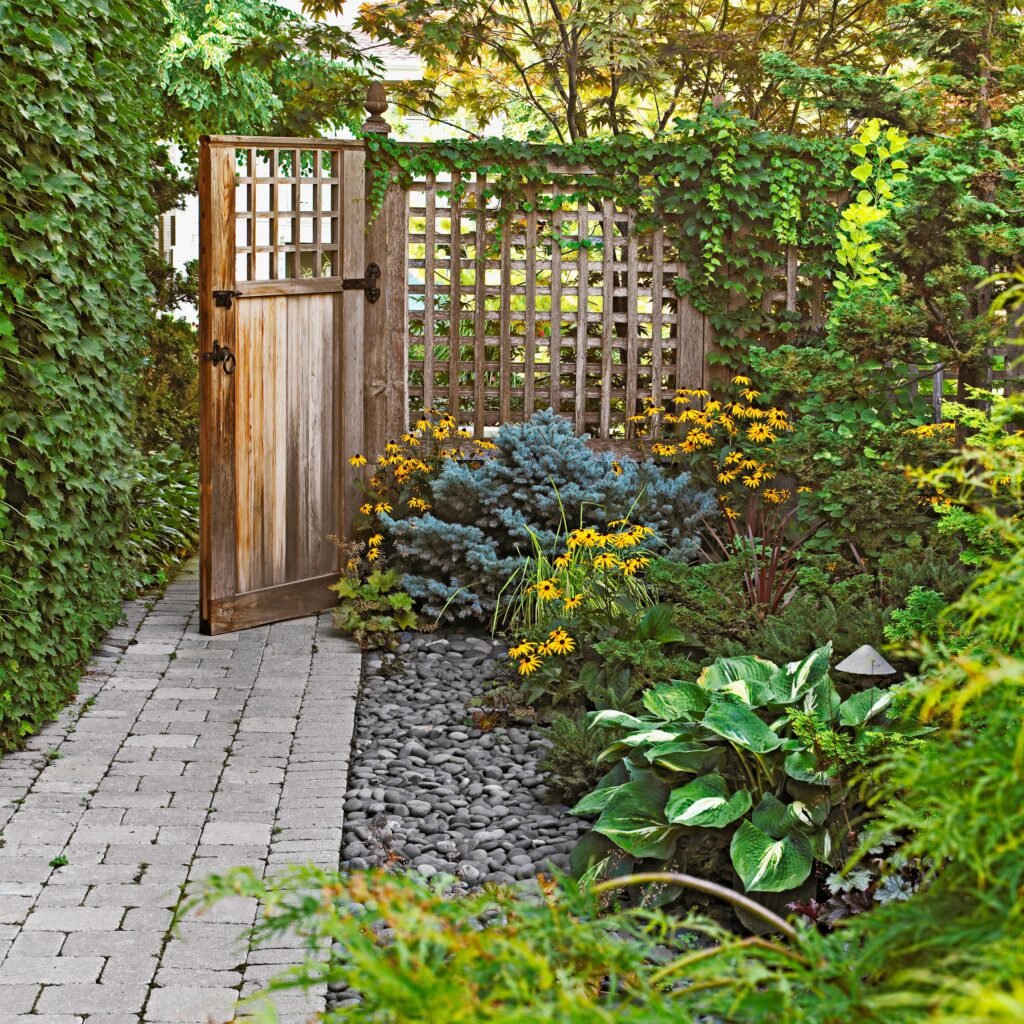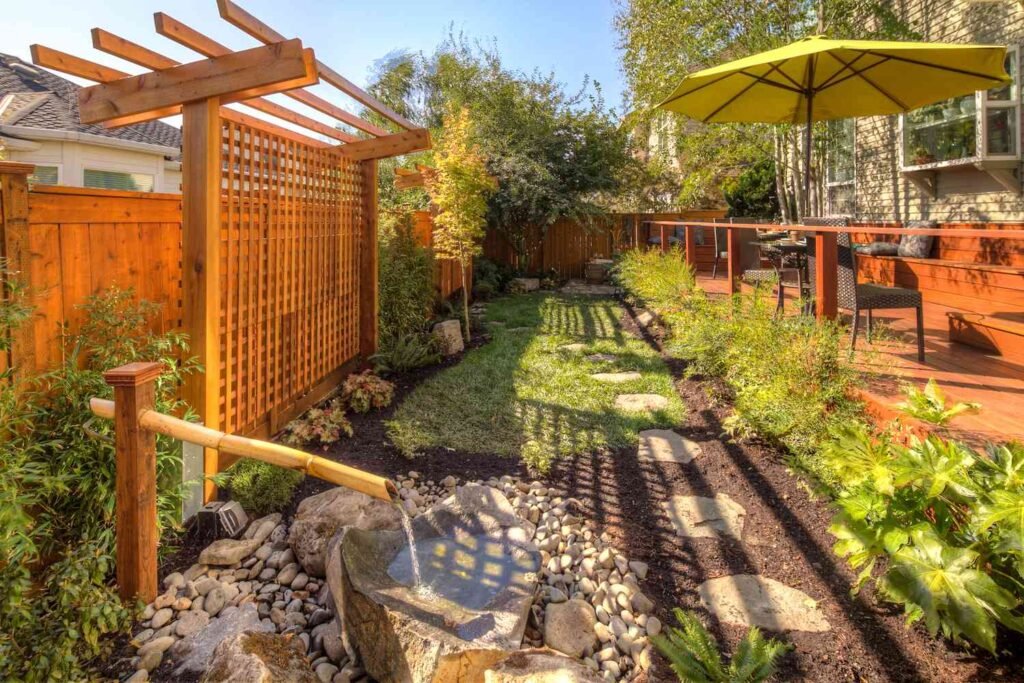In an era where homes are built closer together and outdoor spaces are smaller than ever, the desire for privacy in one’s own yard or home is completely natural. Whether you’re looking to block out street noise, limit visual exposure from second-story windows, or simply create a peaceful retreat, building privacy is a common goal for homeowners.
But privacy can be a delicate subject—especially when your solutions affect someone else’s view, light, or sense of space. The key to success is finding ways to enhance your own comfort without creating conflict or damaging relationships with your neighbors.
This article explores practical, aesthetic, and diplomatic strategies for creating privacy that respects boundary lines, local laws, and the social fabric of your neighborhood.
1. Understand Why Privacy Can Cause Friction

Before implementing any changes, it’s important to consider why privacy projects can upset neighbors:
- They may block sunlight or scenic views.
- They may alter the shared aesthetic of a street or yard.
- They might appear as a symbol of exclusion or mistrust.
- They may involve structural or natural changes that cross property lines.
- They can unintentionally violate HOA rules or zoning codes.
Understanding these sensitivities allows you to approach your privacy upgrades in a more neighbor-conscious and collaborative way.
2. Know Your Rights and Regulations

Before you dig a hole or install a screen, make sure you’re familiar with local regulations, such as:
Zoning and Setback Laws
These laws dictate how close you can build to your property lines and how tall structures can be (including fences, hedges, and trellises).
Homeowners’ Association (HOA) Rules
If you live in a managed community, there may be specific restrictions regarding:
- Fence height and materials
- Tree planting
- Landscape design
- Decorative features (e.g., pergolas, awnings)
Violating these rules can lead to fines—or worse, neighbor resentment.
Tree and Fence Laws
In many jurisdictions, trimming or removing boundary trees or fencing above a certain height may require permission or joint ownership agreements.
Always check before you build, even on your own land.
3. Start With a Conversation
If your project will alter the view, change lighting, or create a visual barrier, it’s best to talk to your neighbor before starting. You don’t need their approval—but a respectful heads-up builds goodwill.
What to Say:
“Hey [Neighbor’s Name], I’ve been thinking of adding some privacy features in the backyard, just to create a little more personal space. I wanted to run it by you first to make sure it doesn’t cause any issues.”
Why This Helps:
- It shows respect and transparency.
- It opens the door to suggestions or compromises.
- It prevents surprises that may create tension.
Sometimes, just being considerate is enough to prevent conflict.
4. Use Natural Privacy Solutions

A. Hedges and Bushes
One of the most traditional—and neighbor-friendly—privacy solutions is planting living screens like:
- Boxwood
- Privet
- Arborvitae
- Bamboo (clumping varieties only!)
- Laurel
These offer a soft, organic barrier that blends into the environment and adds greenery rather than walls.
Pro Tip: Keep hedges neatly trimmed and well inside your property line to avoid boundary disputes.
B. Layered Landscaping
Instead of one tall plant, consider a mix of tall grasses, shrubs, and small trees to form a tiered screen. This approach is:
- Visually attractive
- Environmentally beneficial
- Less imposing to neighbors
Native plants can also attract pollinators and require less maintenance.
5. Go Vertical Without Going Offensive

If you’re tight on space, vertical structures can provide privacy without building a wall.
Ideas Include:
- Trellises with climbing plants like jasmine, clematis, or honeysuckle
- Living walls (vertical gardens) on fences or outbuildings
- Pergolas with drapes or vines for semi-private seating areas
These solutions are generally seen as decorative rather than divisive, making them less likely to offend neighbors.
6. Build Neighbor-Friendly Fencing

Fencing is a go-to solution for privacy, but it can be a source of disputes when:
- It’s too high or solid
- It’s built too close to the property line
- It appears aggressive (e.g., chain link with barbed wire)
Neighbor-Friendly Fence Tips:
- Choose attractive, natural materials (wood, vinyl, composite).
- Consider “good neighbor” fences with identical sides on both properties.
- Keep the height to 6 feet or less, unless higher is legally allowed.
- Leave a few inches of buffer space if building near the boundary.
If you’re replacing an existing shared fence, offer to split the cost—many neighbors appreciate the gesture and might even help choose the style.
7. Design Thoughtfully with Outdoor Structures
Outdoor structures can create privacy in targeted areas without dominating the landscape.
Examples:
- Gazebos or pavilions for private lounging
- Privacy screens on patios made from wood slats or outdoor fabric
- Outdoor curtains hung on rods or pergolas
These features are less permanent and more flexible, making them easy to adjust if concerns arise.
8. Use Smart Landscaping for Partial Privacy
If full visual separation isn’t necessary, partial screening can offer the illusion of privacy.
Tactics:
- Raised planters with tall flowers (sunflowers, hollyhocks, foxglove)
- Strategically placed trees (e.g., evergreens or ornamental trees with wide canopies)
- Garden sculptures or water features that draw attention inward
These techniques direct focus away from neighbors’ yards without erecting physical barriers.
9. Respect View Corridors and Shared Spaces
In suburban and rural areas, neighbors may value shared view corridors—especially in scenic areas. Blocking these views with tall structures can cause friction.
Before planting or building tall features, consider whether:
- The structure blocks a sunset, landmark, or view your neighbor enjoys.
- The yard has open space traditionally used for gatherings or recreation.
- Your project could cast shadows or affect solar panels.
If possible, reposition your privacy solution slightly to preserve shared benefits.
10. Address Privacy From Inside the House
Not all privacy issues come from the outside. Sometimes, you can enhance personal space without changing your yard at all.
Indoor Privacy Enhancements:
- Frosted window film or smart glass
- Privacy blinds or curtains
- Indoor plants near windows to break sightlines
- Window awnings or shutters
These changes affect no one but you and can offer immediate relief from feeling overexposed.
11. Consider Temporary or Seasonal Privacy Solutions
Not ready for a permanent change? Try seasonal or temporary options like:
- Umbrellas or canopies for summer shade and seclusion
- Portable privacy screens that can be folded or relocated
- Seasonal plantings that offer dense cover in summer but recede in winter
This allows you to test what works best—before committing to larger changes.
12. If Conflict Arises, Mediate Don’t Escalate
If a neighbor objects to your privacy efforts:
- Stay calm and listen to their concerns.
- Reiterate that your intent was comfort, not exclusion.
- Offer to adjust or collaborate on a solution.
- Involve a neutral third party (HOA board, city mediator) if necessary.
Legal battles over fences, trees, or structures can be expensive and damaging to neighbor relations. Whenever possible, communicate before you escalate.
Conclusion
Privacy is a personal need—but in shared environments, it becomes a community consideration. The best privacy solutions don’t just block views; they build mutual respect, aesthetic value, and neighborhood harmony.
By combining thoughtful design, legal awareness, and open communication, you can enjoy your space without building walls between you and your neighbors—literally or figuratively.
